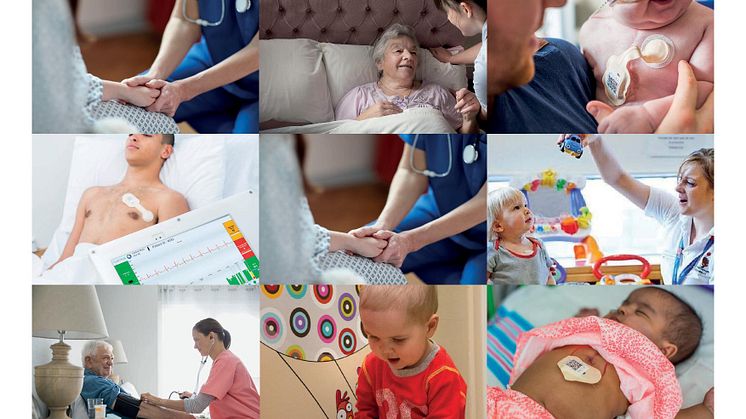
Blog post -
The Future of Patient Monitoring is Here...
Vast sums spent dealing with patient safety issues are wasted, unnecessary and unsustainable. Monitoring patients better to know their status at all times is one of the very few proven actions that can be done to address this crisis. The focus needs to shift to one that actively promotes good health practices, enables providers to move from reactive to pro-active delivery, and move the burden of acute care from the hospital to the home.
Isansys, the leader in new generation wireless patient monitoring systems, has created the Patient Status Engine, a remarkable patient monitoring platform which collects and analyses patients’ vital signs and other relevant data, alerts doctors and nurses if a person’s health is deteriorating and provides a robust and auditable record of the patient’s healthcare journey.
The PSE is a complete end-to-end, CE marked, Class IIa medical device which uses wireless body-worn sensors to automatically collect and analyse six vital signs in real-time including heart rate, respiration rate, temperature, oxygen saturation, blood pressure and coma (or pain) score. The PSE also provides accurate beat by beat information, second by second saturation levels, ECG and PPG on request.
This data is then streamed via a patient gateway to a central server and delivered to the nurses’ station or remotely to clinicians.
The PSE removes the need for paper charts and manages observations based on clinical need. It helps reduce the time spent on routine tasks and frees up staff time for care. It achieves this by simplifying the documenting of patients’ vital signs and assessments, and by the automatic calculation of Early Warning Scores. Patient deterioration is detected early and escalated to the relevant doctor or specialist team, ensuring faster treatment. The wireless nature of the PSE also means patients can be monitored both in hospital, at home, or in the community.
Clinical teams globally are already using the PSE to gain insights into the future health status of their patients. This is achieved through data-driven methods such as predictive algorithms and new physiologically based biomarkers. The PSE is enabling clinicians and nurses to develop new methods to improve patient outcomes, reduce the costs of dealing with patient safety issues, shorten hospital stays and facilitate proactive care.
“For years, the digital world has hardly pierced the medical cocoon. Until now.
“Now, for the first time we have the tools to check vital signs on mobile wireless digital devices and capture all the relevant data from each individual to push the field forward.”
Eric Topol
Creative Destruction of Medicine: How the Digital Revolution
Will Create Better Health Care. 2013.
The PSE lays the foundation for the digital future of healthcare through the accurate digitisation of the patient and the creation of associated dynamic physiological images. It continuously and wirelessly captures, collects, and analyses patient physiological data both in hospital and at home.
How the PSE helps:
- It gives doctors, nurses and specialists real-time visibility of their patients’ health status both in hospital, at home and in the community
- It automatically calculates Early Warning Scores to enable faster detection of patient deterioration and escalation of care
- It allows clinicians to treat patients pro-actively
- It offers reassurance, mobility and unimpeded personal contact
Clinical teams globally are working to demonstrate how the PSE:
- Reduces the costs of care associated with equipment, nursing time, length of stay, adverse events
- Significantly improves patient safety, ward efficiency and compliance with care protocols
- Reduces alarm fatigue
- Offers easy integration with improving workflows with minimal disruption and training
- Reduces transcription and handover errors
- Enables customised handover lists to be created, allowing doctors to flag patients of particular concern
- Enables hospitals to work towards efficient, paperless wards


“Kaleb’s been through a lot and having the Lifetouch on him means there are less wires around him, so we can actually be a parent to him.”
Shaun Lewis, Kaleb’s dad.
“The Isansys Lifetouch™ has allowed me to cuddle her, lift her and care for her in the way I want to. It’s given me peace of mind and a sense of normality.”
Gulshaz, 37, Nusaybah’s mum.

